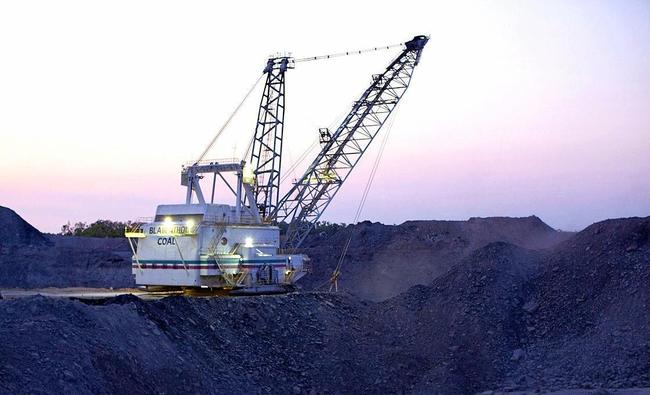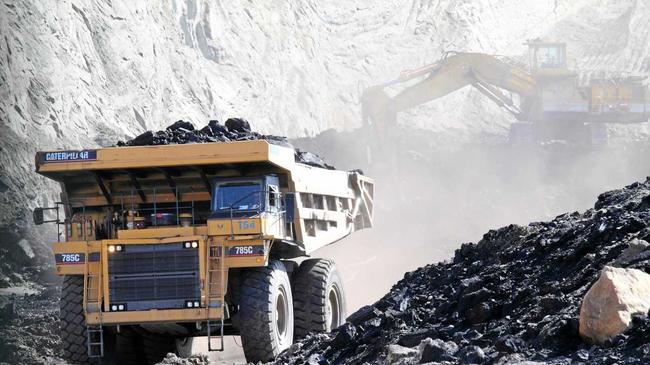Old King Coal is not dead: Opinion
'Coal is affordable as it is the most abundant fossil fuel on Earth'

Opinion
Don't miss out on the headlines from Opinion. Followed categories will be added to My News.
STEVE Hall's prediction that "Coal is Dead" and claims that coal "will become a stranded asset" due to "renewable energy" is just a dream.
Thermal coal fuels 41 per cent of global electricity generation because it is reliable and affordable. Safer than nuclear and less worrisome for those who live below the walls of hydro-electric dams.
Coal is affordable as it is the most abundant fossil fuel on Earth. The total amount of coal in the world is so large (equivalent to about 150,000 quadrillion BTU) that the possession of even a small fraction represents a major economic benefit.
Great Britain has as little as 1 per cent of the world's coal, and yet it was the world's leading coal-producing nation for over a century, and could be again, as it still has massive reserves.
Australia has less than 2 per cent of the world's reserves, but it has been one of the leading coal-exporting nations.
Coal benefits all Australians through its contribution to exports, wages, investment and tax revenue. It is Australia's comparative advantage in coal mining, together with iron ore, that has helped to sustain the longest period of continuous economic growth in the nation's history.
Mr Steve Hall seems unaware of the Industrial Revolution and why it was dependent on the mining of coal, and even in his brave new world of "renewables", the only renewable energy source that is not totally dependent on coal is "firewood".

That said, without coal we would be back in the medieval dark ages as none of his electric vehicles, his solar panels, nor his awful windmills could be produced without steel. And without coal, coking coal, we cannot produce steel nor even mine for iron ore, nor find tools to cut our "firewood" with, just about all industry would come to a grinding halt.
Metallurgical coal, also known as coking coal, is used to produce coke, the primary source of carbon used in steelmaking. Approximately 1.5tonnes of metallurgical coal are required to produce 1 tonne of coke. On average, about 630 kilograms of coke are required to produce 1000 kilograms (1 tonne) of steel.
In 2013, an estimated 1.2billion tonnes of coal was used by the steel industry. China is the world's largest producer and consumer of coking coal, accounting for about 527million tonnes in 2013. Australia and the USA follow, producing 158 and 78million tonnes, respectively.
The international market for coking coal, not surprisingly, is highly dependent on the steel industry. Over 90 per cent of the total seaborne trade of metallurgical coal are accounted for by shipments from Australia, Canada, and the US.
Other important uses of coal include alumina refineries, paper manufacturers, and the chemical and pharmaceutical industries. Several chemical products can be produced from the by-products of coal. Refined coal tar is used in the manufacture of chemicals, such as creosote oil, naphthalene, phenol, and benzene. Ammonia gas recovered from coke ovens is used to manufacture ammonia salts, nitric acid and agricultural fertilisers. Thousands of different products have coal or coal by-products as components: soap, aspirins, solvents, dyes, plastics and fibres, such as rayon and nylon. Activated carbon, used in filters for water and air purification and in kidney dialysis machines. Carbon fibre - an extremely strong but lightweight reinforcement material used in construction, mountain bikes and tennis rackets.
Silicon metal, used to produce silicones and silanes, which are in turn used to make lubricants, water repellents, resins, cosmetics, hair shampoos and toothpastes.
The by-product of coal, fly ash is also used to replace or supplement cement in concrete. In the USA, for example, more than half of the concrete produced is blended with fly ash. Without using carbon electrodes, and pure hydrogen, silicon for solar cells and solar batteries, and guess where that has to come from? Old King Coal is not dead.
Ron Owen,
Gympie


